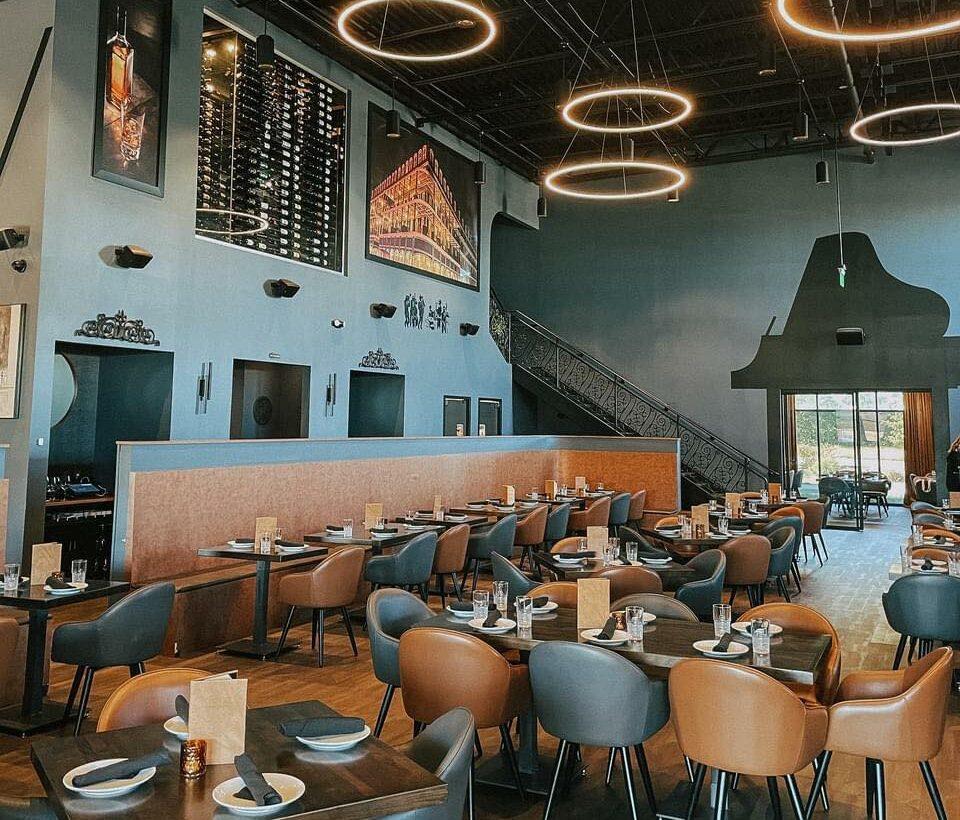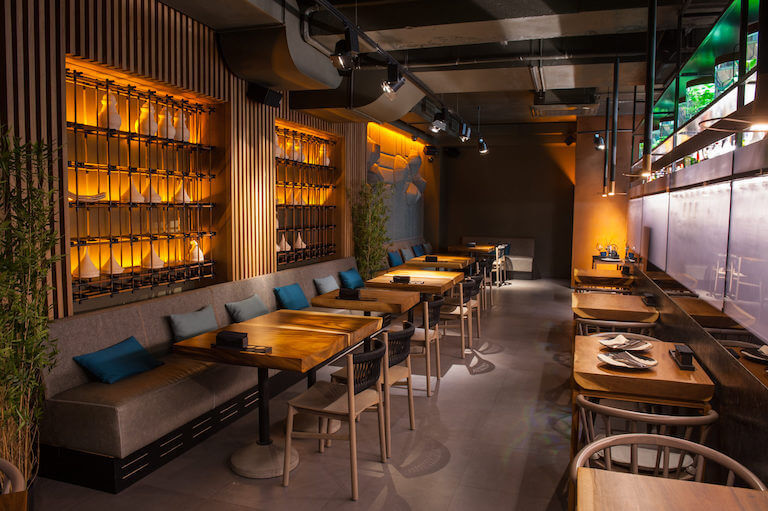Best Asian Restaurant Islamabad: Experience Flavors from Across Asia
Best Asian Restaurant Islamabad: Experience Flavors from Across Asia
Blog Article
Savor Genuine Asian Cuisine With a Pan-Asian Spin for a Culinary Experience
Beginning on a cooking journey with genuine Oriental cuisine, boosted with a Pan-Asian spin, uses an unique opportunity to discover the rich tapestry of flavors that specify the area's diverse culinary practices. As you ponder these tempting meals, think about the social narratives and historic influences that shape them, each bite providing a tale waiting to be uncovered. asian restaurant isb.

Checking Out Pan-Asian Flavors
In the world of global gastronomy, Pan-Asian cuisine attracts attention for its remarkable diversity and the harmonious interaction of flavors from various Asian cultures. This culinary strategy commemorates the rich practices and special components found across the continent, producing a tapestry of preferences that is both interesting and satisfying. Key to Pan-Asian cuisine is its capability to stabilize different flavors-- sweet, salty, spicy, and sour-- while highlighting the quality and top quality of each ingredient.
From the umami-rich soy sauce of Japan to the intense chili peppers of Thailand, Pan-Asian cuisine supplies a comprehensive palette of flavors. These components are usually integrated in innovative ways, improving meals with layers of complexity. As an example, using great smelling natural herbs such as lemongrass and cilantro, usual in Vietnamese and Thai food, adds a rejuvenating brightness to recipes, while the incorporation of coconut milk delivers a velvety, rich structure.
The focus on fresh produce and aromatic spices ensures that each dish is not just a feast for the taste buds but likewise for the senses. Pan-Asian cuisine welcomes diners to begin on a culinary journey, exploring the large and differed landscapes of Oriental gastronomy with every bite.
Blend Dishes to Attempt
While Pan-Asian food is celebrated for its conventional tastes, the modern culinary landscape is significantly embracing combination dishes that blend these timeless aspects with influences from other areas. This ingenious technique not only honors the abundant heritage of Oriental cookeries however additionally introduces novel preference experiences that attract contemporary tastes.
A prime example of such a combination recipe is the Korean-Mexican taco, where marinated bulgogi beef is wrapped in a warm tortilla, topped with kimchi and a hot gochujang-infused salsa. This combination marries the vibrant, full-flavored flavors of Korea with the vivid, fresh components of Mexican cuisine. Similarly, sushi burritos have obtained appeal, amalgamating the fragile creativity of Japanese sushi with the hearty, hand-held comfort of a burrito, usually featuring combination active ingredients like tempura shrimp and avocado with a drizzle of wasabi mayo.
Another significant recipe is Thai curry ramen, which instills the luscious, fragrant seasonings of Thai curry right into the calming brew of typical Japanese ramen, creating a harmonious mix that entices the detects. These blend dishes extend past simple novelty; they represent a cooking discussion between societies, urging exploration and technology in the globe of Pan-Asian food.
Essential Ingredients and Seasonings
To really appreciate Pan-Asian cuisine, one need to comprehend the important ingredients and spices that develop its foundation. This diverse cooking style draws from a rich tapestry of Eastern traditions, utilizing a harmonious blend of textures and tastes.
Fragrant elements are essential, with ginger, lemongrass, and garlic being ubiquitous throughout various Pan-Asian dishes. These components give a fragrant base that enhances the complexity of flavors. Spices such as celebrity anise, cardamom, and cinnamon introduce warmth and character, echoing influences from areas like China and India.

Cooking Methods and Tips
Grasping the art of Pan-Asian cuisine calls for familiarity with its distinct cooking methods, each adding to the vibrant tapestry of flavors this culinary custom is commemorated for. Central to these approaches is the stir-fry, a rapid food preparation method that protects the nutritional honesty and vibrant colors of active ingredients. Making use of a wok, the stir-fry approach permits for even warmth distribution, necessary for accomplishing the characteristic appearance and flavor equilibrium of Pan-Asian recipes.
Another fundamental method is steaming, particularly prevalent in Chinese food. This mild approach preserves the all-natural tastes and nutrients of components, making it optimal for seafood and veggies. Dumplings, a precious staple, commonly gain from steaming, leading to soft, delicious textures.
Barbecuing, also important, presents great smoky midsts to dishes such as Oriental bulgogi or Japanese yakitori (asian fusion restaurant). This method commonly includes seasoning ingredients, enabling tastes to pass through deeply before food preparation over an open fire or warmer
Last but not least, grasping the art of balancing flavors-- pleasant, sour, salted, bitter, and umami-- is vital. Appropriately layering these components can raise a dish from common to extraordinary, offering a complicated and pleasing cooking experience that embodies the essence of Pan-Asian food.
Dining Experiences Worldwide
Around the world, Pan-Asian food supplies an unparalleled dining experience, celebrated for its rich tapestry of flavors and lively presentations. This cooking sensation has actually gone beyond cultural borders, capturing the hearts and tastes buds of food fanatics worldwide. In multicultural cities fresh York, London, and Sydney, Pan-Asian restaurants function as melting pots where culinary customs from Thailand, Japan, China, and past merge, giving diners with a diverse mix of dishes that highlight the region's variety.
The worldwide allure of Pan-Asian cuisine depends on its capability to offer both authenticity and development. Cooks skillfully marry typical active ingredients such as lemongrass, soy sauce, and miso with modern strategies, causing meals that are both familiar and refreshingly new. This fusion allows restaurants to begin on a cooking journey that values heritage while welcoming modernity.
Moreover, eating experiences are elevated with attentively developed environments that mirror the principles of Pan-Asian aesthetics. From minimal Japanese-inspired insides to vibrant Thai-themed spaces, each dining establishment provides an one-of-a-kind atmosphere that complements the culinary offerings. Because of this, customers are not just consuming a dish but partaking in a social experience, making Pan-Asian dining a really worldwide phenomenon.
Verdict
The exploration of Pan-Asian food uses an extensive understanding of the complex interplay of tastes and culinary practices across Asia. By welcoming combination dishes such as Thai curry ramen and sushi burritos, the cooking journey not just highlights the versatility of conventional components but additionally showcases ingenious modern-day techniques. This gastronomic journey, enriched by vital seasonings and cooking techniques, supplies a distinct possibility to appreciate the social diversity and culinary virtuosity that define Pan-Asian food on a global scale.
Getting started on a culinary trip through genuine Oriental food, improved with a Pan-Asian twist, supplies a distinct possibility to check out the rich tapestry of tastes that define the region's varied culinary practices.In the world of global gastronomy, Pan-Asian food stands out for its exceptional diversity and the harmonious interaction of flavors from various Asian societies. Key to Pan-Asian food is its capability to balance different tastes-- wonderful, salted, spicy, and sour-- while highlighting the quality and quality of each component.

Report this page